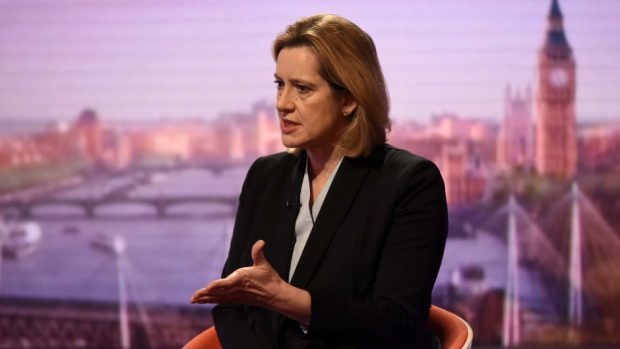Home Secretary Amber Rudd has announced a fresh crackdown on so-called “county lines” drug dealing, which reaches out into the north-east.
As the number of murders in London has outstripped that of New York for the first time in the last couple of months, Ms Rudd has launched the government’s first Serious Violence Strategy.
The strategy will link police with councils, schools and other partners across the country to tackle “county lines” drug-running from gangs into major cities like London out into other areas – at first the Home Counties but now extending north into Scotland, including Aberdeen.
Ms Rudd said: “This strategy represents a real step-change in the way we think about and respond to these personal tragedies, these gruesome violent crimes which dominate the front pages of our newspapers with seemingly depressing regularity.
“A crucial part of our approach will be focusing on and investing more in prevention and early intervention.
“We need to engage with our young people early and to provide the incentives and credible alternatives that will prevent them from being drawn into crime in the first place. This in my view is the best long-term solution.
“Because what better way to stop knife crime than by stopping young people from picking up knives in the first place?”
Police Scotland Detective Chief Inspector Garry Mitchell confirmed police in Aberdeen and further north were involved in the strategy to tackle “the so-called county lines phenomenon” and had been working alongside police in England and Wales using Drug Dealing Telecommunication Restriction Orders (DDTROs), introduced at the start of the year.
“This particular issue has been recognised in the north and north-east for a number of years and Police Scotland, and legacy forces, have tackled it on an ongoing basis,” he said.
“The key focus of our activity is the disruption of those involved in drug dealing activity and those exploiting rural communities in the north.
“We are aware of the disruption element of the DDTROs and are working in line with UK activity in developing this tactic.
“In all our work we collaborate with UK law enforcement partners and with the third party sector to prevent any vulnerable people in the community from being targeted.”
Shadow Home Secretary Diane Abbott MP, however, flagged-up an apparent lack of new money or extra police officers to tackle street violence.
“The Tories’ concern about knife crime doesn’t even run so far as providing new money or extra officers to tackle it,” she said.
“The Tories have slashed police funding and resources, leaving them struggling to cope with rising serious crime.
“This latest announcement looks like a cover up of their own failures.”
